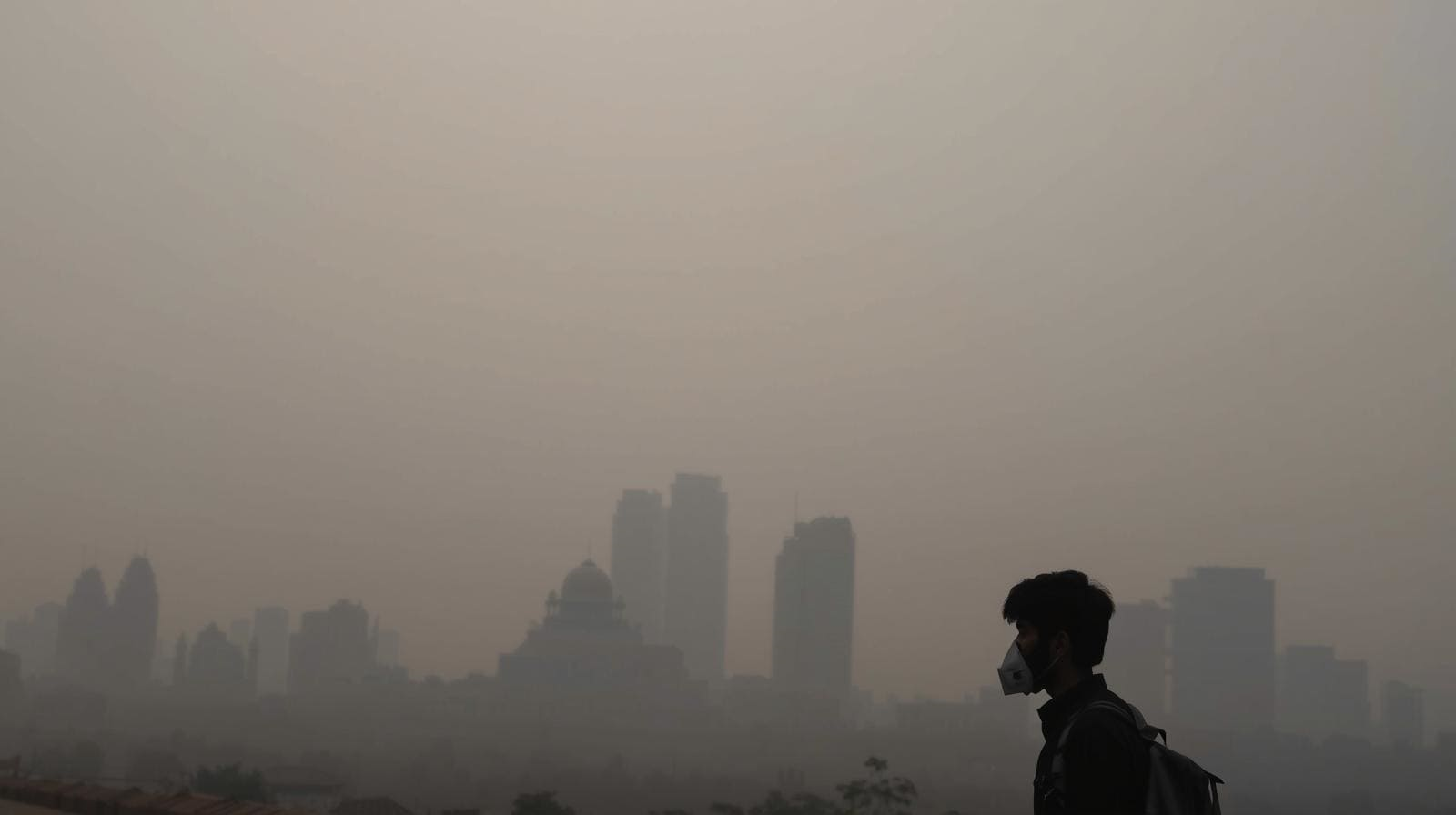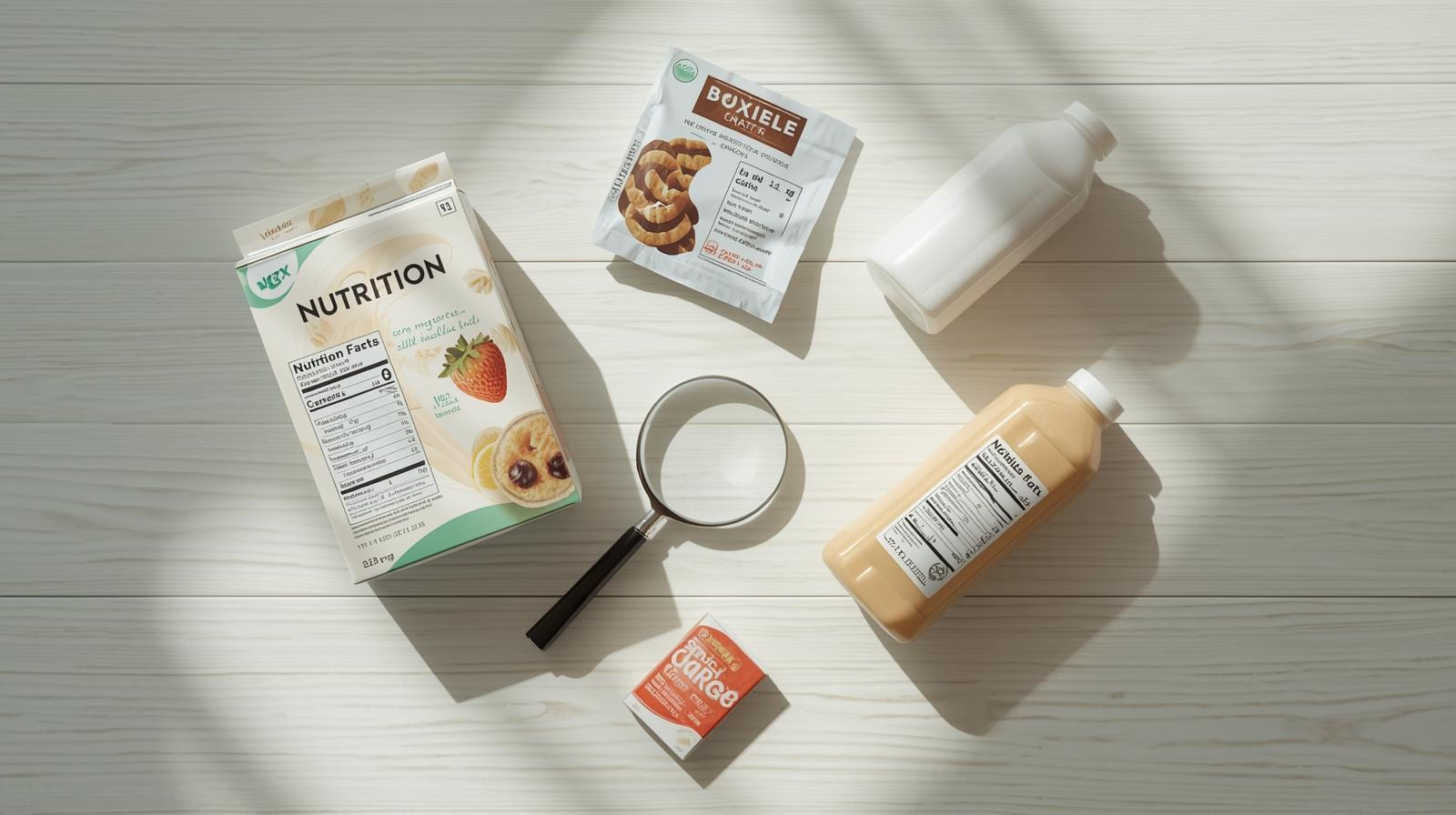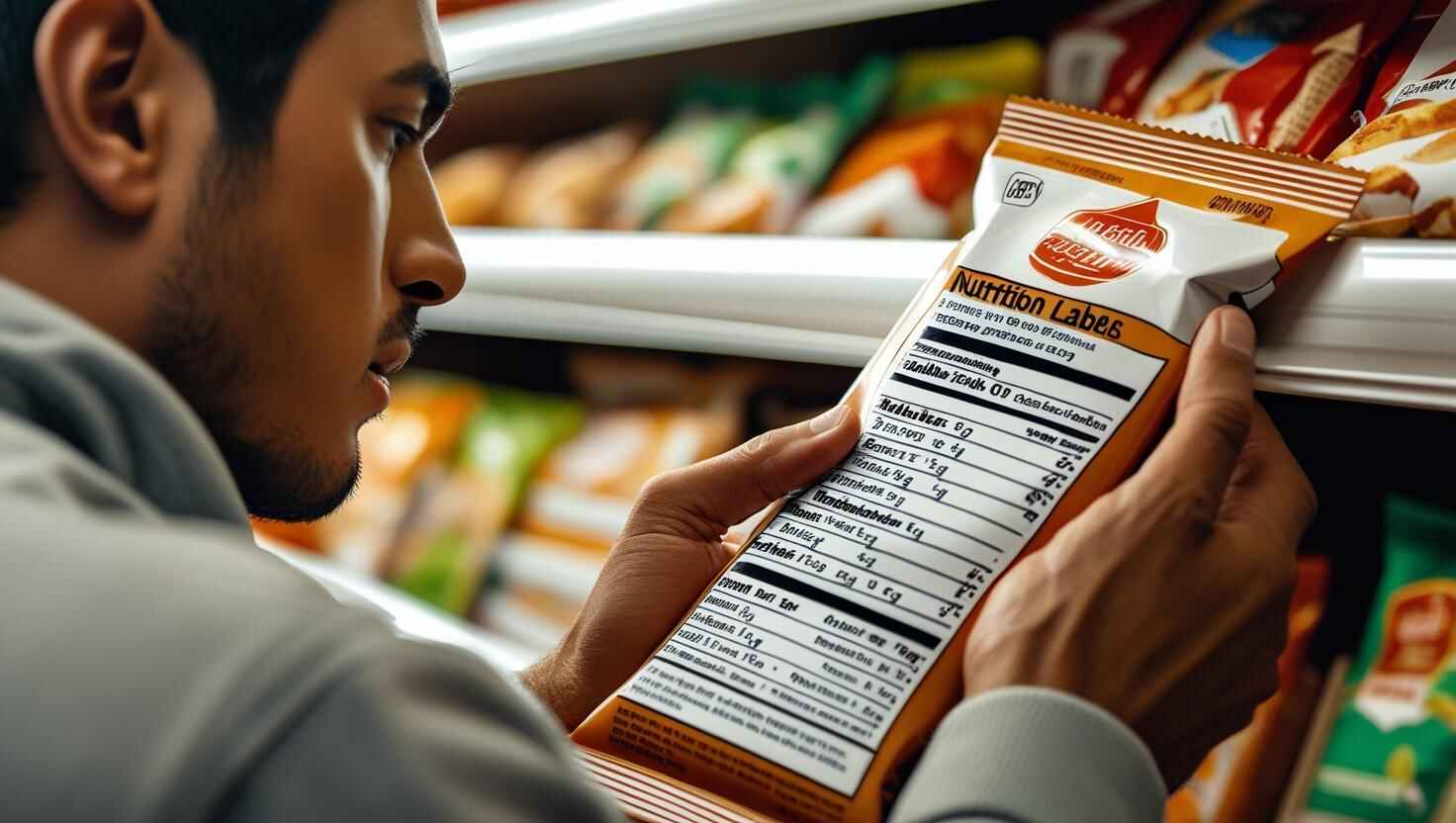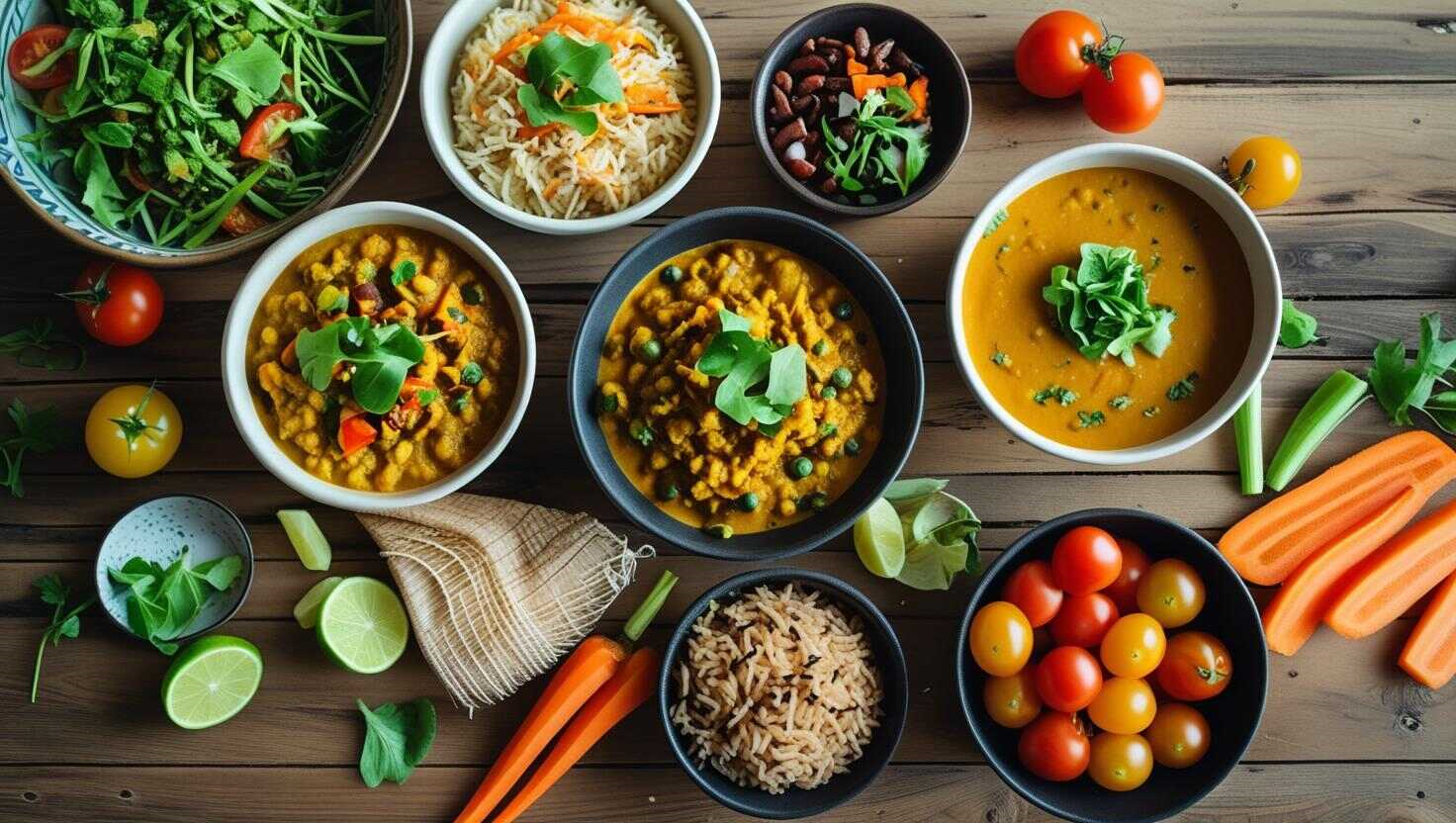
 by Admin
by Admin
 12 Oct, 2025
12 Oct, 2025
Do You Think Ingredients Are the Only Thing That Matters?
Most shoppers look at the ingredients list and stop there. But Indian food labels tell a much deeper story — one that can reveal how safe your food is, where it really comes from, and how much sugar or fat it truly contains. Once you learn to read labels properly, you’ll never look at your grocery shelf the same way again.
Learn to Read Labels
FSSAI Licence Number — Your First Check
That 14-digit FSSAI number you see on packaged foods isn’t just a random code. It’s proof that your food is legally manufactured and sold under Indian food-safety laws.
If you don’t see it, that product may not meet even the basic safety standards.
Every packaged food sold in India must carry this number (for example, 10012022000345). You can verify it on foodlicensing.fssai.gov.in to ensure traceability and authenticity. It’s mandatory — both for Indian-made and imported foods — and gives you confidence that what you’re buying has passed India’s food safety regulations.
The FSSAI licence system was introduced to create accountability in the food supply chain. Each number is unique to a manufacturer or importer, making it possible to trace any food safety issue back to the source.
Before you buy anything packaged, make it a habit to locate this 14-digit code. You’ll usually find it near the manufacturer’s address or on the back panel.
Quick reminder:
✅ Check the number on the official FSSAI portal to confirm authenticity.
✅ Each number links directly to the manufacturer — traceability assured.
✅ Mandatory for all packaged foods sold in India (including imports).
Vegetarian or Non-Vegetarian? Look for the Dot
One of India’s simplest yet smartest systems is that tiny coloured dot on the label. It tells you, at a glance, whether a product is vegetarian or not.
🟢 Green dot: 100% vegetarian — only plant-based ingredients, no animal derivatives.
🟤 Brown dot: Non-vegetarian — contains egg, dairy, meat, or any animal-derived ingredient.
If you don’t see a dot at all, skip it. The mark is legally required.
Additives and E-Codes
Those mysterious E-numbers on labels — like E-102 or E-621 — identify additives and preservatives. Some are perfectly fine; others can cause reactions, especially in kids or sensitive individuals.
Here are a few worth remembering:
| E-Code | Common Name | Function | Notes |
|---|---|---|---|
| E-102 | Tartrazine | Yellow dye | May trigger hyperactivity in children |
| E-110 | Sunset Yellow | Colouring agent | Possible allergic reactions |
| E-211 | Sodium Benzoate | Preservative | Avoid in acidic drinks |
| E-330 | Citric Acid | Preservative/regulator | Generally safe at normal levels |
| E-621 | MSG | Flavour enhancer | May cause headaches in some people |
Nutrition Table — Read It Right
Ignore the marketing claims on the front — the truth is on the back.
Always compare per 100 g/ml, not “per serving.” Brands often manipulate serving sizes to make their numbers look healthier.
Here’s a simple guide when checking packaged foods:
- Sugar: Less than 5 g per 100 g
- Sodium: Less than 400 mg per 100 g
- Fibre: More than 3 g per 100 g
- Trans fats: As close to 0 as possible
- High protein: Usually 10 g or more per 100 g
When you get used to reading these tables, you’ll instantly spot the difference between a genuinely healthy product and clever packaging.
Milk Packet Colours — What They Mean
Not all milk is equal — and India’s colour-coded packets make that clear.
- Blue: Toned milk (~3% fat)
- Red: Whole milk (~6% fat)
- Green: Double-toned (~1.5% fat)
- Yellow/Purple: Often flavoured or fortified
- Still, always check the actual fat percentage on the pack — conventions can vary between brands. And make sure it’s pasteurised; look for ISI or AGMARK certification.
MFD, Best Before, and Batch Codes
Those tiny printed dates matter more than you think.
- MFD (Manufacture Date): Tells you when it was made — a freshness cue.
- Best Before: It’s still safe after this date, but the quality might drop.
- Use By: Don’t consume it after this date — especially for perishables.
- Batch Code: Useful for recalls and traceability.
If the date looks smudged, tampered with, or covered by a sticker — that’s your cue to put it back on the shelf.
The Marketing Maze: Misleading Claims
Food packaging can be sneaky. Here’s how to see through the noise:
- “Natural” — No strict legal definition in India. It can still contain synthetic additives.
- “Sugar-free” — Often contains sugar alcohols or artificial sweeteners that still affect insulin or digestion.
- “Multigrain” — Sounds healthy, but many are mostly refined flour. Check if whole grains are at the top of the ingredient list.
- “No Added Preservatives” — Other additives like stabilisers or emulsifiers can still extend shelf life.
Bottom line: The front is marketing. The back is the truth.
Your 10-Second Label Check Before You Buy
When you’re in a hurry, this quick checklist saves you from bad choices:
✅ Find the FSSAI number — legible and present.
✅ Check the first three ingredients for sugar, salt, or cheap fats.
✅ Make sure sugar < 5 g and sodium < 400 mg per 100 g.
✅ Confirm the veg/non-veg dot.
✅ Review MFD and Best Before/Use By dates.
A Note on Imported Foods
Imported foods sold in India must meet the same standards — and you have every right to check.
They must display an FSSAI import licence and importer details.
- All information must be in English — name, ingredients, allergens, origin, and dates.
- Imported labels must be re-stickered in India to meet our regulations.
- Watch for unapproved additives or strange E-codes.
- If a pack is missing these details or the labels look tampered with — avoid it and report it.
- Final Takeaway
India’s labelling rules exist to protect you — but they only work if you actually read them.
Spend a few seconds decoding that label before you buy. You’ll dodge hidden sugars, excessive salt, and unnecessary additives — and start making informed choices every time you shop.
Teach your family to do the same. The more aware we are, the more honest the food industry has to be.
Sources: FSSAI Guidelines (2023); Food Safety & Standards (Labelling & Display) Regulations 2020; Indian Journal of Public Health Nutrition; WHO Asia Reports.
Disclaimer: Educational use only; not medical or professional dietary advice.
Search
Recent Post

 16 Oct, 2025
16 Oct, 2025
Corporate Wellness: The New Workplace Priority

 12 Oct, 2025
12 Oct, 2025
What’s Really Inside Your Food Packet?

 02 Jul, 2025
02 Jul, 2025
Is Your Air & Water Making You Sick?

 14 Jun, 2025
14 Jun, 2025
















